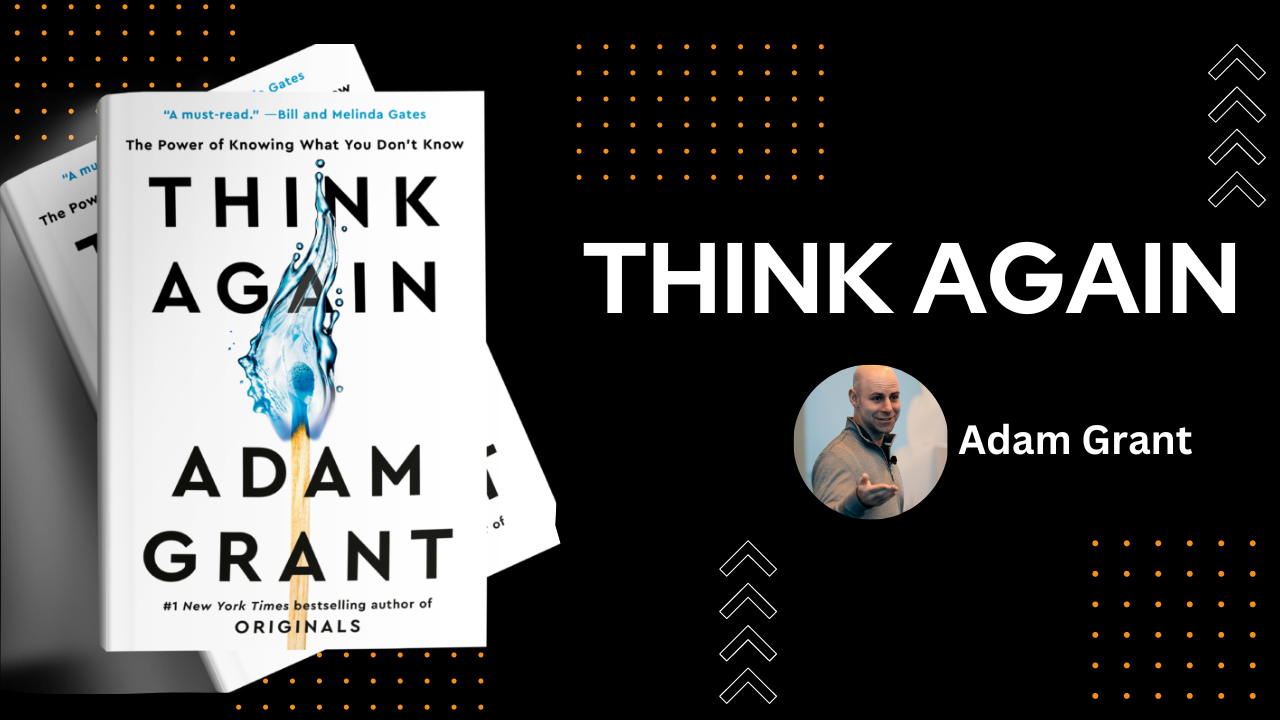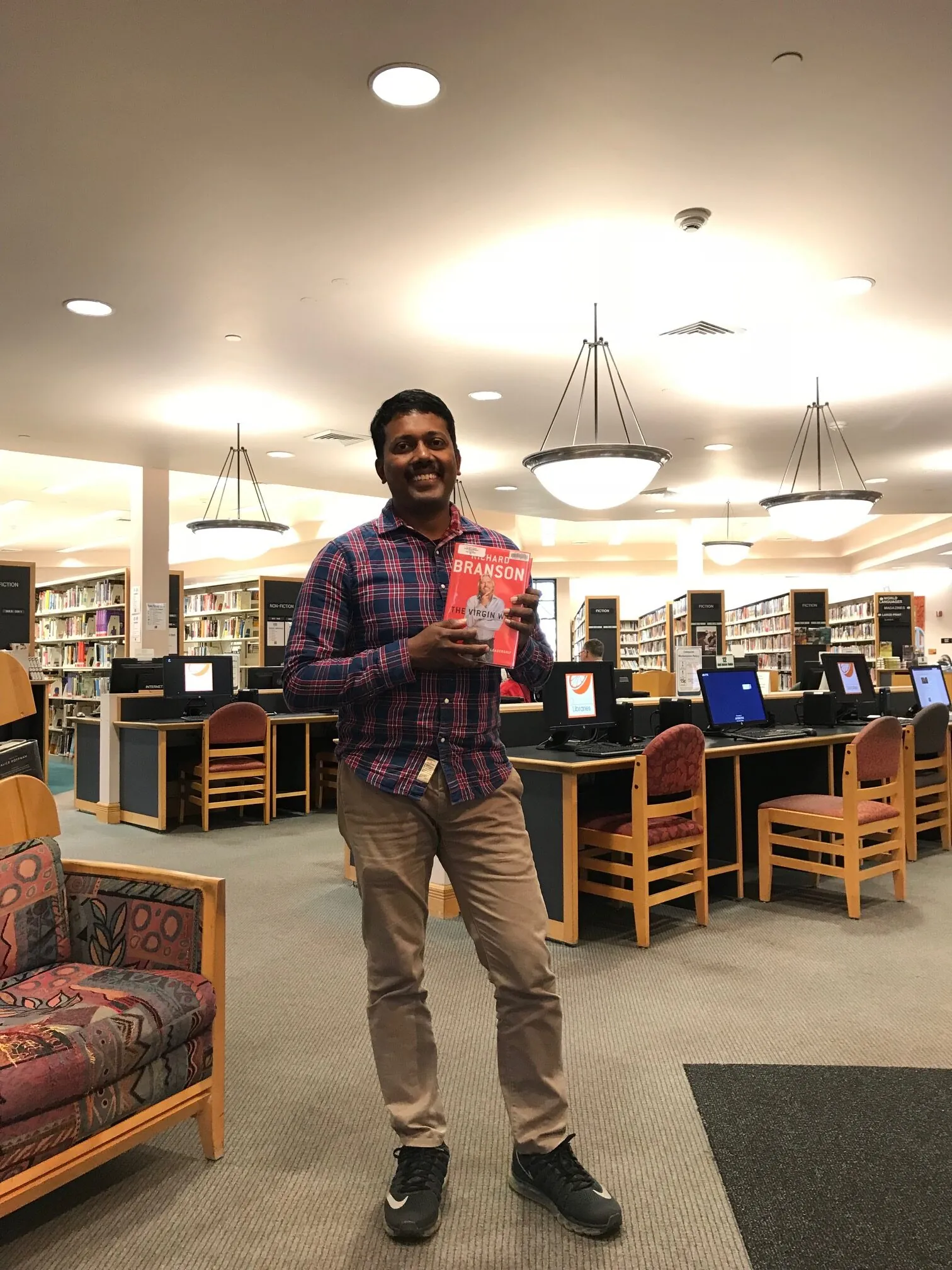Think Again by Adam Grant
Think Again by Adam Grant is a thought-provoking and insightful book that challenges readers to reconsider their own assumptions and beliefs, and to be open to new perspectives and ideas.
And I recently also listened to his podcast, which shared great insights on Radical Candor / Criticism.
It is good to change your opinions and be wrong. When someone proves you wrong, you don’t have to resist it. Instead, you can be joyful that you have been proven wrong and learned something new. The ability to rethink and unlearn is an important skill to have. We must let go of the knowledge, assumptions, and opinions that no longer serve us well.
Mike Lazaridis & Blackberry: Adam writes about Mike Lazaidis and Blackberry. Mike was a science prodigy, and it led to the creation and rise of Blackberry. However, his failure to rethink as the CEO led to his company’s failure. The keyboard was one of the primary reasons why people bought Blackberry. However, Mike couldn’t rethink Blackberry without a keyboard. As a result, it led to its demise.
Armchair Quarterback and Imposter Syndrome: The author writes that women underestimate their leadership skills while men overestimate them. When confidence exceeds competence, it is armchair quarterback syndrome. (Example: football fans who are convinced they know more than the coaches). The worst performers are the most overconfident. The opposite is Imposter syndrome, where competence exceeds confidence. An upside of this is that it will motivate us to work harder. We need to be willing to change our beliefs. A mark of the lifelong learner is that they can learn something new from everyone they meet. Great thinkers do not boast about how much they know. Instead, they marvel at how little they understand.
The joy of being wrong: There is great joy in being wrong because you learn something new. (Daniel Kahneman, Nobel prize-winning psychologist, told Adam Grant that ‘Being Wrong is the only way I feel sure I have learned anything.’ Things change over time, and we need to stick to old beliefs. Being wrong is a source of pleasure. Jeff Bezos said- People who are right change their minds a lot. Scientists eliminate their wrongs and continue their experiments. We need to act like scientists.
Adam writes on Harish Natarajan, the human debater who beat the machine. Harish is able to make the audience think again with his arguments. We should concede when someone else makes a better argument and acknowledge the same. We should always be willing to listen. Beethoven and Mozart did not have higher hit rates than some of their peers. Yet, they generated a larger volume of work, giving them more shots at greatness. In a heated argument, you can always stop and ask – What evidence can change your mind?
Vaccines: There are a good number of people who do not believe in vaccines. They think it could be harmful. However, Adam quotes examples where minds could be changed by Interviewing. Also – even after putting the facts and the interview, if they still do not change their mind, you have to respect their point of view and move on. This will make you look better.
It is good to learn from scientists how they communicate. Good Scientists test their hypotheses by striking up conversations. The author also writes about Al Gore, who narrowly lost the US Presidential election in 2000. Some considered him boring. He was able to rethink well and also starred in a blockbuster film in 2006 on Climate Change.
Textbooks and Rethinking: The author recommends we rethink what is taught in textbooks. The textbooks are not perfect. We need to rethink history, and it will give us new perspectives. Even in the courses he takes, even if it is the same course offered the next quarter or semester, Adam has come up with a practice where he rethinks at least 20% of his content. He also suggests setting up a rethink time to question our assumptions.
Culture of Learning: Rethinking is not just for individuals; we need to be doing collective Rethinking at organizations. NASA’s ability to rethink caused disastrous outcomes. The 1986 space shuttle Challenger exploded (although they identified the risk that circular gaskets called O-rings could fail), they went ahead with the launch, killing Seven Challenger Astronauts. In 2003 seven astronauts lost their lives – on Space Shuttle Columbia – After takeoff, the team on the ground noticed that some foam had fallen from the ship, and they took it lightly. Creating physiological safety for the team so they can voice their concerns aids the culture of learning and Rethinking. It is easier said than done. Amazon has a practice of detailed writing -6-7 pages memo (with no slides) where people can question the assumptions and comment.
Bank Loans & Rethinking: In a study of California banks, when banks had high rates of executive turnover, the new bankers were able to freely rethink and write off the bad loans. However, if it is the same banker, even though loans are not paid, they keep approving additional loans to customers who do not pay. (They are not able to rethink their decision). Adam writes that Rethinking is more likely when we separate the initial decision-makers from later decision evaluators.
Rethinking for Children/Young Adults: When kids are in school, we ask them what they want to become. Adam feels this is the weirdest question to ask kids. Adam shares an example of his cousin Ryan who became a neurosurgeon. Ryan had his career path set at a very young age. However, once he started pursuing medicine, Ryan started having questions about what he was doing. He even wondered if studying/ being a neurosurgeon was the right fit for him. However, he had already invested so much (a sunk cost) that he could not go back on it. Ryan could not re-think because he was so firm on this decision he had made. However, in his mid-thirties, he took up entrepreneurship (finally, Ryan was able to re-think and take the plunge). Adam writes that students who are the most certain about their career plans at twenty are often the ones with the deepest regrets by thirty.
If the community you live in and cannot get off does not aid re-thinking, you could create your own micro-community (a set of friends who share similar interests). Rethinking is a tool for leading a more fulfilled life.
Franklin D Roosevelt (FDR): FDR was Governor of New York from 1929 until his election as President of the United States in 1932). During the time he was Governor, he delivered the ‘Try Something’ message. It is common sense to take take a method and try it – if it fails, frankly admit it and try another.’ Above all, try something. FDR argued that the country demanded bold, persistent experimentation (during the Great Depression). FDR’s trial-and-error method of formulating policy was popular enough that they elected him President four times.
The author also recommends having dinner conversations with kids about Rethinking. It is also a good practice to set up a rethinking time every week. We also need to rethink our life goals and evaluate them once or twice a year.
My Take on the Book Think Again by Adam Grant
Adam has a lot of depth in his book (like he recommends Go Deep). One thing I loved about reading Think Again is that there was lots of new information to learn. Learning about Mike Lazaridis and Blackberry (Mike’s failure to re-think cost the downfall of Blackberry). Adam’s cousin’s story about Ryan being a neurosurgeon and how he could not rethink his career for a while (a sunk cost) and later got out of it. This is a great lesson for students in school and folks starting their careers. Adam’s book also questioned some of my current thinking.
Thanks for making us rethink, Adam.




Leave a Reply